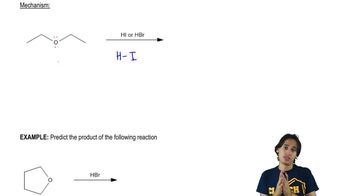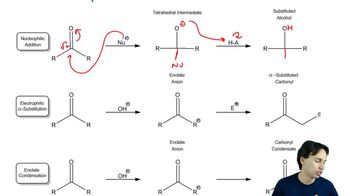Propose a mechanism for each of the following reactions:
a.
 Verified step by step guidance
Verified step by step guidance Verified video answer for a similar problem:
Verified video answer for a similar problem:



 4:33m
4:33mMaster The Mechanism of Alcohol Condensation. with a bite sized video explanation from Johnny
Start learning